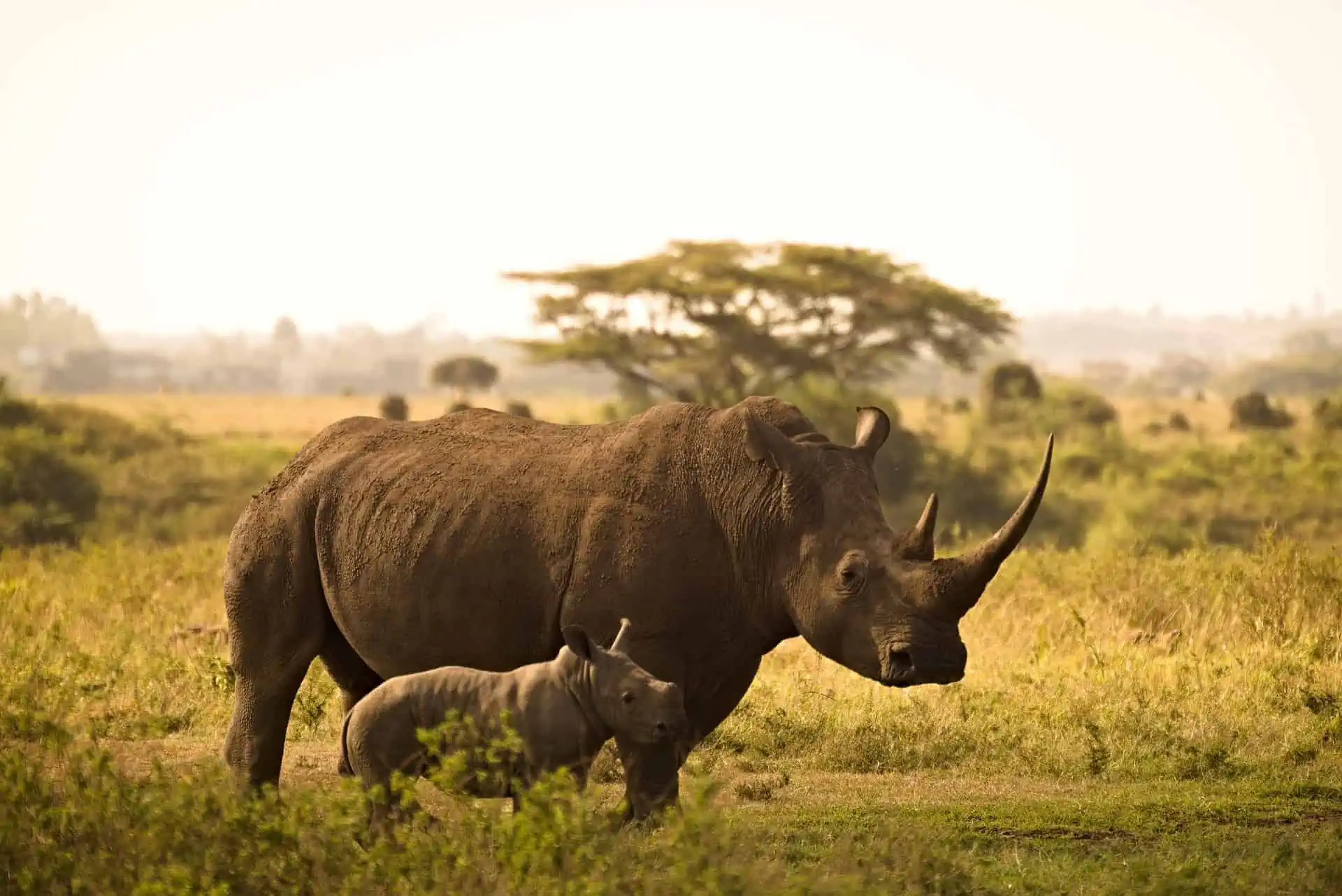The Majestic Rhinoceros: Guardians of Africa’s Wilderness
Rhinos in Africa; Africa, with its vast and diverse landscapes, is home to some of the most iconic and awe-inspiring wildlife on the planet. Among these magnificent creatures, the rhinoceros stands out as a symbol of strength, resilience, and the ongoing battle for conservation. In this article, we delve into the world of rhinos in Africa, exploring their species, habitats, conservation challenges, and the crucial role they play in maintaining the ecological balance.
Species Diversity: – Rhinos in Africa
Africa is home to two main species of rhinoceros: the Black Rhino (Diceros bicornis) and the White Rhino (Ceratotherium simum). Despite their names, both species are actually gray in color, and the distinction in names is believed to be a misinterpretation of the Dutch word “wijde,” meaning wide, which was later confused with “white”; The Black Rhino is known for its hooked upper lip, adapted for grasping leaves and twigs from bushes, while the White Rhino has a square-shaped mouth, ideal for grazing on grasses.
Distribution and Habitats:
Rhinoceros populations in Africa are scattered across various countries, with their distribution largely influenced by habitat availability. Black Rhinos are found in a range of habitats, from savannas and grasslands to forests and deserts, while White Rhinos primarily inhabit grassy plains and savannas. Key regions for rhino conservation include South Africa, Uganda, Namibia, Zimbabwe, Kenya, and Tanzania.
Conservation Challenges:
Despite their iconic status, rhinoceros populations face severe threats, primarily driven by human activities. The illegal wildlife trade, driven by demand for rhino horn in certain Asian markets, poses a significant risk to their survival. Rhino poaching has surged due to the mistaken belief in the medicinal properties of rhino horn, despite it being composed of keratin, the same substance as human hair and nails.
In addition to poaching, habitat loss and fragmentation due to human expansion and agricultural activities have further exacerbated the challenges faced by rhinos. Climate change and political instability in some regions also contribute to the difficulties of conserving these magnificent creatures.
Conservation Efforts: – Rhinos in Africa
Various organizations and governments are working tirelessly to protect and conserve rhinoceros populations in Africa. Anti-poaching units, community-based conservation initiatives, and international collaborations aim to combat the illegal wildlife trade. Efforts are also underway to establish and maintain protected areas, ensuring suitable habitats for rhinos to thrive.
Innovative conservation strategies, such as rhino dehorning, have been implemented in some regions to reduce the appeal of rhinos to poachers; This involves safely removing the rhino’s horn, which regrows over time, minimizing the risk of poaching while allowing the animal to continue its natural behaviors.
The Ecological Importance of Rhinos:
Rhinos play a crucial role in shaping their ecosystems. As grazers and browsers, they help control vegetation, influencing the composition of plant species in their habitats. This, in turn, affects the distribution and abundance of other wildlife species, creating a delicate ecological balance. The loss of rhinos could have cascading effects on the entire ecosystem.
Conclusion: – Rhinos in Africa
As we celebrate the one-year anniversary of this article, the conservation journey for Africa’s rhinoceros continues. These majestic creatures, with their prehistoric charm, embody the wild spirit of the continent. It is imperative that we recognize the importance of preserving their habitats, combating poaching, and supporting conservation efforts to ensure the continued existence of rhinos in Africa and safeguard the biodiversity of this remarkable continent.








